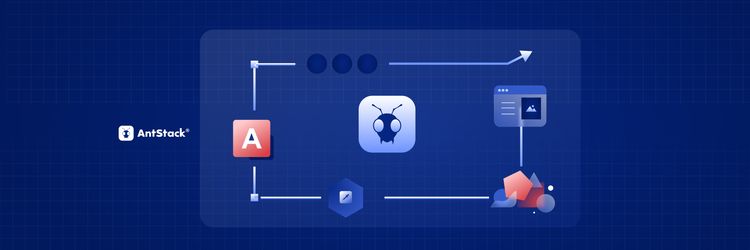User research: Directed design decisions to scalable, cloud-native product design
Often, we feel enthusiastic about embarking on a new project, including the brainstorming, problem-solving, and idea generation that come with it. However, once we actually begin the design process, looking at the blank canvas can feel overwhelming and make us unsure of how to proceed.

While it's essential to have a plan and vision for your design, it's equally important to know how to get started and take the first steps. Before diving into the design process, it's crucial to take a step back and assess the problem you are trying to solve. Design thinking is a human-centered approach to problem-solving that emphasizes empathy, experimentation, and iteration. It encourages designers to understand the needs and motivations of their users and to approach the design process with an open mind.
Before starting the design process, it's crucial to establish the limits of your product, which determine its fundamental intention. It's also essential to monitor when you're exceeding those boundaries so that you can course correct at the appropriate time.
Where to Start
Building the boundaries
Often, products are conceived based on an idea to solve a particular problem and potentially build a business. Every problem comes with three essential elements to consider: Who, What, and How.

- Who: Who are you addressing? This refers to the people or entities involved in the problem. Knowing who is involved can help in understanding their core problem and the social context before building a solution.
- What: What is the problem? This refers to the specific issue or challenge that needs to be addressed. Identifying the 'what' can help in clarifying the scope and nature of the problem.
- How: How would you solve the issue? This refers to the strategies or approaches that can be used to solve the problem or address the issue at hand. Considering 'how' can help in identifying the potential courses of action and evaluating their feasibility, effectiveness, and potential impact.
The three factors of 'who, what, and how' establish the boundaries of a product. A product will encounter multiple problems throughout its lifecycle. Based on the type of problem, these factors will differ. When product builders do not have a clear understanding of the product's boundaries, they may end up building what they believe is ideal for the product or what the client requests them to build.
Understand what is important
When you have a clear understanding of the problem you are solving and the target audience, determining which features to include becomes a straightforward task. It's important to prioritize the development of the minimum viable product (MVP) for your product. The idea is to include only the minimum features necessary to address the problem and make sure the MVP stays within the boundaries of the product. By prioritizing the MVP, you can keep track of the product's development and get it into the hands of users for feedback.
When to Stop
During the course of product development, boundaries are often overlooked, causing products to deviate from their intended course. A vague boundary can impact the product in various ways.
Stepping beyond the boundaries
- The one fix for all problems: In a social context, problems are usually multifaceted and interdependent. As we work on developing the MVP, we often come across such issues and opportunities. However, designers may give in to the temptation of adding more features to address all problems at once. While this may appear to enhance the product's value, it also carries the risk of creating something unnecessary for the specific problem that the product aims to solve. Solutions should not be built on assumptions. When a new potential problem arises, it is necessary to re-evaluate the boundaries and identify who will be affected by it. Then, consider how to integrate a solution to the existing product.
- The one-more-feature trap: The value of a product is not necessarily determined by the number of features it offers. Adding more features to the product sometimes comes with a lack of clear understanding of who exactly the target audience is and what issues they are facing. This can create a trap of continuously adding more features to the product, which can delay its launch and prevent the opportunity to receive valuable user feedback. Moreover, the product's growth itself can sometimes become an issue, even if it initially delivered value to the target users. Addressing such problems requires a different approach and a separate boundary for building a solution.
- A product for everyone and for everything: Hypothetically, if a product were capable of solving everything for everyone, it could presumably be the most valuable product. However, in reality, a product built for everybody is built for nobody. Without clarity on what problems the product is addressing, it could become a solution looking for a problem. This can confuse users and make it difficult for them to understand the purpose of the product, ultimately leading to product failure regardless of the efforts invested.
- Attending every feedback: While user feedback is valuable in determining the next steps for a product, it is not necessary to address every suggestion. Prioritising suggestions that align with the product's core goals and business model should take precedence. Less critical requests can be postponed or disregarded based on the product's scope.
When developing a product, it is important to establish clear boundaries that define its purpose and goals. Clear boundaries help to avoid scope creep, which is when a project expands beyond its original goals and objectives. Regardless of how technically innovative the product is, if it fails to address the real problems that people face, it is unlikely to succeed. Boundaries provide a framework that guides the development process and ensures that the product remains focused on its intended purpose.













